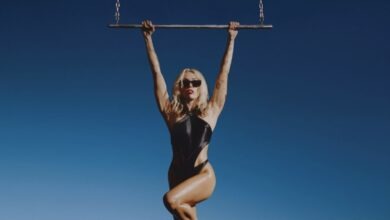Lesbians have been at the forefront of alternative style, and that doesn’t stop at clothing. Choosing to come out of the closet and be open about our sexual orientation involves shining a (sometimes unwanted) spotlight on ourselves. Simply existing as a confirmed lesbian means society automatically perceives us as going against the grain, so what have we got to lose? While homophobia is terrifying, it takes guts to come out, so we’re already equipped with the courage to style ourselves in alternative ways.
Lesbians have their own culture and history. We — sometimes subconsciously — draw upon that well to express who we are. We pay homage to those who came before us when we engage with particular visual signals to flag our lesbian pride. Such signals were developed over time — we’ve had to secretly communicate our sexual orientation to other lesbians in times of great persecution — and these codes are interwoven in our experience today.
Lesbian style is more identifiable in 2021 because we’re not expected to hide ourselves in the same intense way lesbians of the past were forced to. The hairstyles commonly associated with lesbians reflect the different movements we’ve been a part of — and influenced — throughout history. When we choose what clothes to buy and hairstyle to try, we are affiliating ourselves with wherever the style originated and its subsequent evolution. So where did it come from?
Short back and sides
A ‘short back and sides’ haircut might be a classic style for men, but it’s still to this day rebellious for women to disobey the feminine expectations placed upon them and cut their hair short. Because lesbians don’t aim to find a male partner, because we want to signal our sexual orientation to other women who love women, and because living a life out of the closet is a brave choice that often leads to finding comfort in alternative communities and styles, the ‘short back and sides’ has been a favourite for many lesbians.
It’s impossible to talk about the ‘short back and sides’ without mentioning butches, studs, and their history. Butches have been at the forefront of receiving homophobic persecution. When Radclyffe Hall wrote The Well of Loneliness, and it was deemed “immoral and corrupting” for referencing lesbianism and having a “masculine” female protagonist, 1920s butch style, including short hairstyles, was put in the spotlight. She represented what homophobic society tried to keep secret, lesbianism, so her appearance became synonymous with lesbianism.

Radclyffe Hall wasn’t the first lesbian to don the old ‘short back and sides’, and many other lesbians – especially butch and stud lesbians – were working the hairstyle in the same era, including blues icon Gladys Bentley, who even (unofficially) married another woman in 1931.

The ‘short back and sides’ haircut wasn’t left in 1920s blues bars, either. While many butches and studs still choose the alternative hairstyle for women, it’s now often worn by femmes and other lesbians who don’t fit the butch/femme dynamic, too. The ‘short back and sides’ has evolved, taking inspiration from other styles along the way, with more alternative spice frequently spicing up the classic – but still alternative for women – style.


Punk cuts and colors
Lesbians have historically had a large presence in alternative rock and punk subcultures, which is represented in our alternative hairstyles. For example, the REBEL DYKES, who now have their own documentary, were a 1980s “community of dykes who met doing art, music, politics and sex…[who] went on to change the world.” The group was formed out of a group of friends who met at Greenham Common peace camp and “went on to become artists, performers, musicians and activists in London.” They did a lot of protesting, including anti-Thatcher rallies and demanding action around AIDS.



The REBEL DYKES 1980s lesbian punk style preceded, and inspired, punk fashion since, such as the Riot Grrl subculture. But the REBEL DYKES were not an island, they came to fruition a decade after The Runaways had torn up the scene with their own woman-loving punk energy. Ever wonder why we love a good mullet? Well how could we not, after growing up with Joan Jett rocking one? Swoon!

Punk still influences lesbian hairstyles of today. Whether it be bright colours, shaved heads, or a classic mullet, lesbians are the poster girls for alternative hairstyles, and we have our rebellious predecessors to thank for that.


Lesbians have used alternative hairstyles to resist the pressure to conform to traditional notions of femininity or sexual orientation. Whether it be a ‘short back and sides’ to resist feminine expectations, or a punk “don’t touch me” mullet like Joan Jett, lesbians have used hairstyles to reflect our nonconformity. In doing so, lesbians and bisexual women have led the way in music and feminism by pushing the boundaries on the patriarchal expectations for us to be docile and submissive.
While being persecuted, we’ve remained fierce and uncompromising when it comes to who we love and what we stand for. When there hasn’t been a chance for us to speak, out of fear, or by literally being silenced, we’ve flaunted daring hairstyles and clothing to confirm that we aren’t assimilating to heteropatriarchal ideals. If anything, we’re moving further away!!! *thrashes guitar on the ground*





